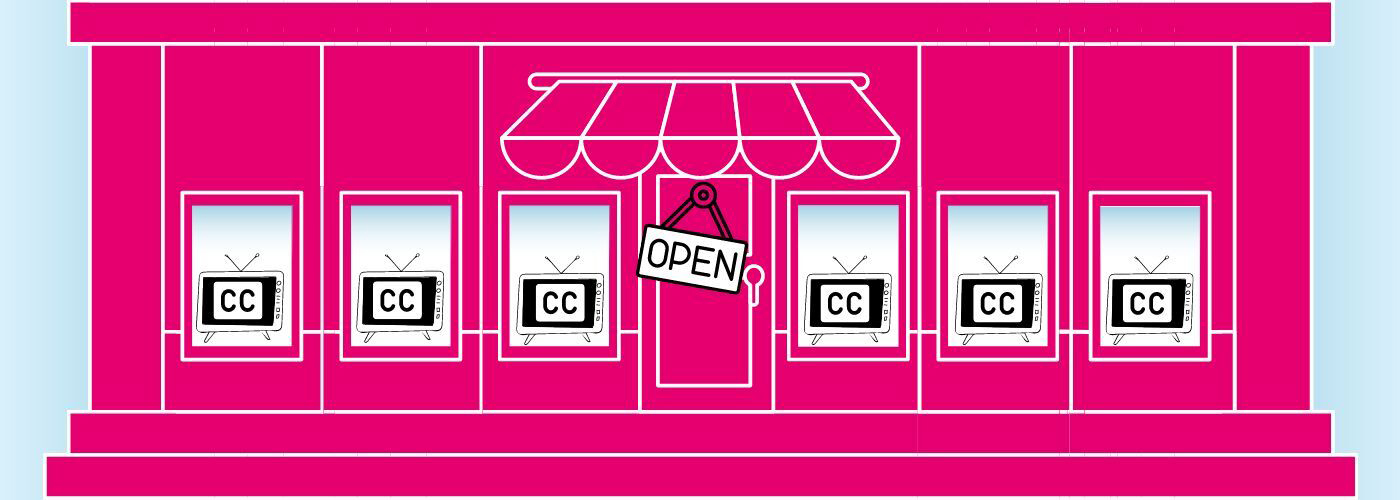Open Captions vs. Closed Captions: What’s the Difference?
[FREE Webinar] Quick Start to Captioning
We live in an age where much of our communication, entertainment, and news happen digitally. Because we spend an average of 6 hours and 48 minutes per week watching online videos, you’ve likely heard of closed captioning.
Closed captioning is everywhere you look: on streaming platforms, on educational videos, and on the TV at your local gym or bar. Open captioning, on the other hand, isn’t as familiar to many people.
Read on to learn what open captions are, how they work, and when they’re used.
Open Captions vs. Closed Captions
How are open captions different from closed captions? The short answer is that closed captions can be turned off while open captions cannot.
Closed captions are created on a separate track from the video, which means they can be toggled on or off. Open captions are burned into a video track, so they’re permanently on screen and cannot be turned off.
How Do Open Captions Work?
The process for creating closed and open captions is the same – the difference lies in how the captions are associated with your video.
For both closed and open captions, you must first transcribe an audio file into a text transcript. At 3Play Media, we do this with a unique process that combines automatic speech recognition software and multiple rounds of human editing to ensure the highest accuracy rate.
Then, the text and media need to be synchronized so that the text appears with its corresponding audio track. Captions reflect all forms of audio information, including dialogue, sound effects, music, and more.
Closed captions are published by uploading a separate caption file to your video platform or player. The platform associates your caption file and video file and plays them together, allowing users to turn captions on or off with the CC toggle button.
To publish open captions, you need to burn the captions into the video file itself. Once you have captions for your video, you can add open captioning. When ordering open captioning from 3Play Media, we output a video file containing the original video with the captions burned into the file so they will always appear. When the open captioning is complete, we send an email to notify you that the files are available for download. Our standard output is an M4V video file, but our team will work with you to provide almost any output you need.
Learn the Basics of Captioning [FREE webinar]
Why Use Open Captions?
Now that you know the difference between open captions and closed captions, you might be wondering why you should use open captions.
Since open captions are part of the video itself, they provide the advantage of being supported by all video players and devices. Open captions also eliminate inconsistencies across different video players and allow publishers to control the exact size and style of the captions. Another advantage of open captions is that they make it easier to create DVDs and other physical media.
Let’s discuss some examples of where you might encounter open captions.
Social Media
Autoplaying videos on silent is a common practice on social media platforms. A study by Verizon Media found that 69% of users watch video with the sound off in public places, and 25% of users watch video without sound in private places.
Without captions, many viewers will not be able to understand your content. Many social media content creators use open captions for consistency across platforms, ensuring their videos are understandable and accessible.
Film Screenings
Under the Americans with Disabilities Act, movie theaters are required to provide and maintain closed captioning and audio description equipment for digital films that are produced with accessibility features. However, many people who use captions have difficulty with movie theater captioning devices.
To improve viewer experience and ensure permanent accessibility, advocates from the d/Deaf and hard of hearing communities have called for screenings at movie theaters and film festivals to include open captions.
Videos in Public Spaces
Open captions help make videos that are publicly displayed more accessible.
For example, The National Park Service provides open captions for all audiovisual programs that “enable viewers with hearing loss to participate fully when viewing video or multimedia productions without self-identifying.”
Subtitles for the deaf and hard of hearing (SDH) share similarities with open captions, especially if they’re burned in. SDH are subtitles that combine the information of both captions and subtitles. Like open captions, they serve D/deaf and hard of hearing audiences and are permanently on-screen.
SDH subtitles assume the end user cannot hear the dialogue. They include important non-dialogue information such as sound effects, music, and speaker identification. SDH and open captions are sometimes confused with one another, but there are a couple of key differences. SDH subtitles vary from open captions in that they are generally designed to provide translations of dialogue into another language. SDH subtitles also allow for greater customization options than open captions.
Benefits of Open Captions
Organizations in the corporate, education, and social media industries may benefit from publishing videos with open captions, finding that ensuring equal access to their content has the added perk of improved brand perception and user experience.
When videos have open captions, viewers can watch them in places where audio is unavailable. If someone’s on a noisy train or on a crowded street, captions will convey the speech when the sound is obscured. Captions also let viewers enjoy videos on mute in quiet environments like a library, office, or train.
Open captions provide a permanently inclusive viewing experience for those with hearing loss without the need to upload a separate track for captions. They help to ensure that all viewers, regardless of their hearing abilities, can fully understand and engage with your videos.
__
This blog was originally published on September 9, 2016 by Elisa Lewis and has since been updated for accuracy, clarity, and freshness.
Further Reading

Subscribe to the Blog Digest
Sign up to receive our blog digest and other information on this topic. You can unsubscribe anytime.
By subscribing you agree to our privacy policy.






